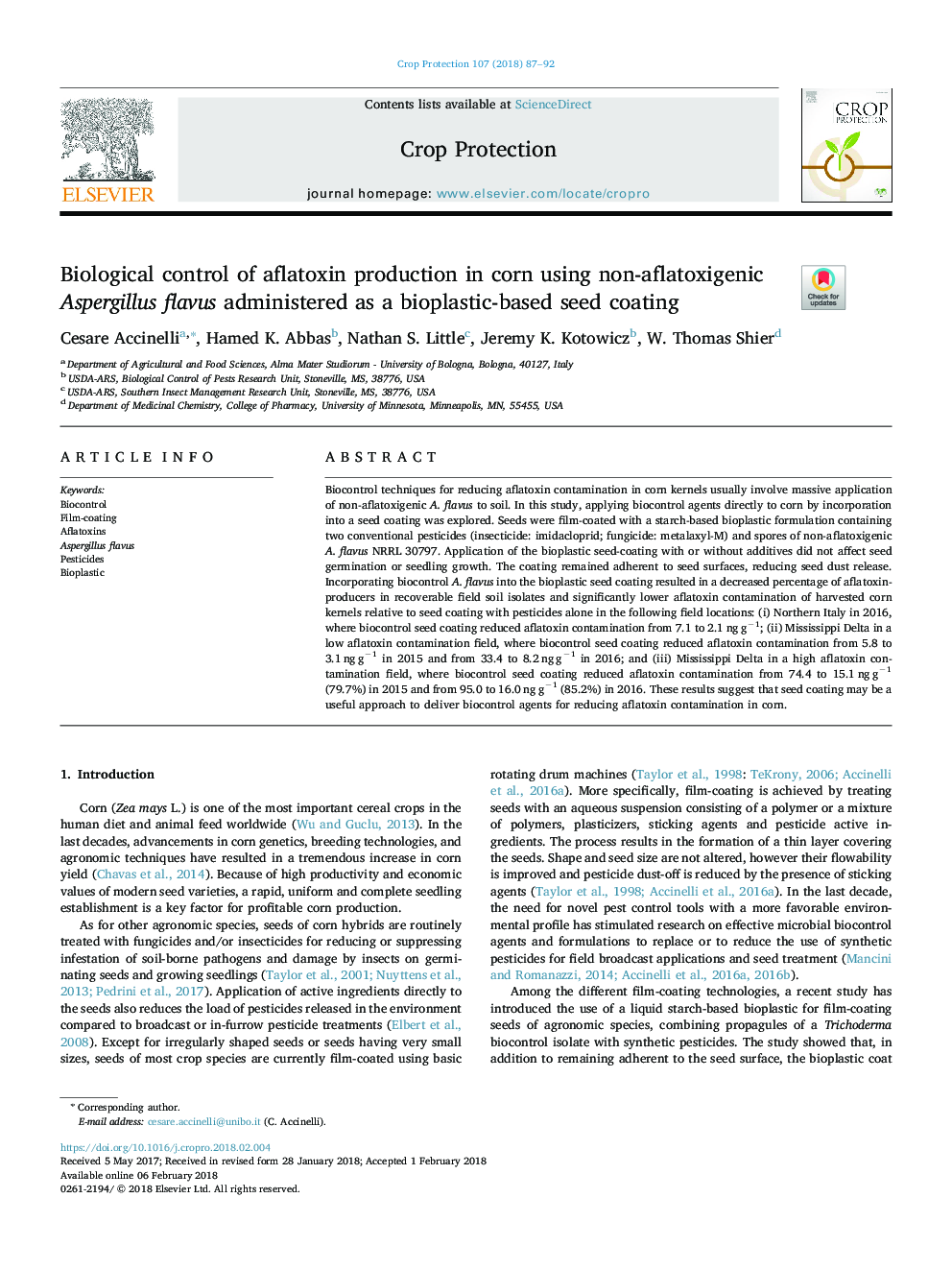| Article ID | Journal | Published Year | Pages | File Type |
|---|---|---|---|---|
| 8878219 | Crop Protection | 2018 | 6 Pages |
Abstract
Biocontrol techniques for reducing aflatoxin contamination in corn kernels usually involve massive application of non-aflatoxigenic A. flavus to soil. In this study, applying biocontrol agents directly to corn by incorporation into a seed coating was explored. Seeds were film-coated with a starch-based bioplastic formulation containing two conventional pesticides (insecticide: imidacloprid; fungicide: metalaxyl-M) and spores of non-aflatoxigenic A. flavus NRRL 30797. Application of the bioplastic seed-coating with or without additives did not affect seed germination or seedling growth. The coating remained adherent to seed surfaces, reducing seed dust release. Incorporating biocontrol A. flavus into the bioplastic seed coating resulted in a decreased percentage of aflatoxin-producers in recoverable field soil isolates and significantly lower aflatoxin contamination of harvested corn kernels relative to seed coating with pesticides alone in the following field locations: (i) Northern Italy in 2016, where biocontrol seed coating reduced aflatoxin contamination from 7.1 to 2.1â¯ngâ¯gâ1; (ii) Mississippi Delta in a low aflatoxin contamination field, where biocontrol seed coating reduced aflatoxin contamination from 5.8 to 3.1â¯ngâ¯gâ1 in 2015 and from 33.4 to 8.2â¯ngâ¯gâ1 in 2016; and (iii) Mississippi Delta in a high aflatoxin contamination field, where biocontrol seed coating reduced aflatoxin contamination from 74.4 to 15.1â¯ngâ¯gâ1 (79.7%) in 2015 and from 95.0 to 16.0â¯ngâ¯gâ1 (85.2%) in 2016. These results suggest that seed coating may be a useful approach to deliver biocontrol agents for reducing aflatoxin contamination in corn.
Related Topics
Life Sciences
Agricultural and Biological Sciences
Agronomy and Crop Science
Authors
Cesare Accinelli, Hamed K. Abbas, Nathan S. Little, Jeremy K. Kotowicz, W. Thomas Shier,
